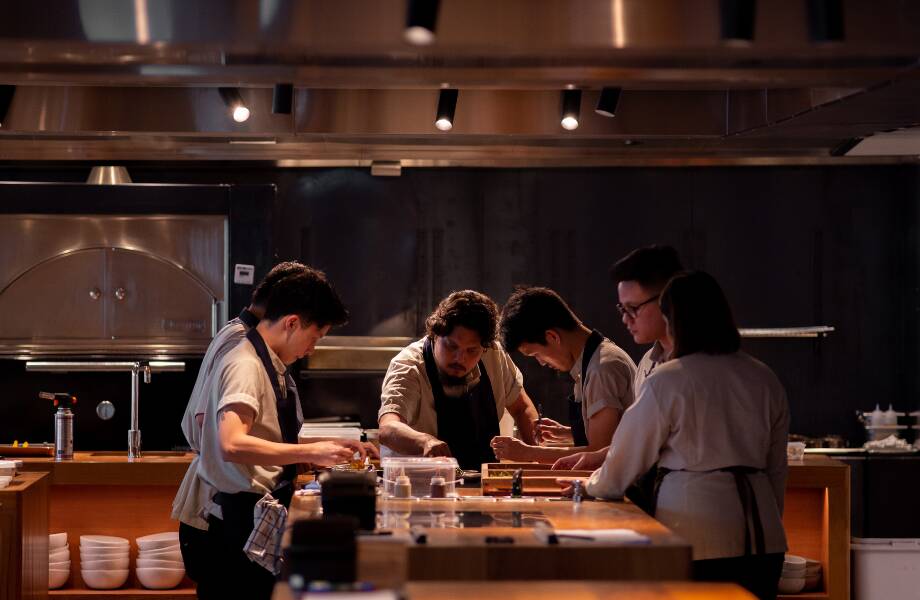[vc_row][vc_column][vc_column_text]Today we are going to focus on one of my favorite teas, hou kui, and in the process we are going to discuss a problem that plagues basically all parts of the luxury market: fakes. The tea industry is flooded with fakes. I’ve mentioned them in the past, but now I would like to dive more deeply into the topic, and to discuss the importance of recognizing fakes. But before we start on that topic, I’d like to first introduce hou kui.
Coming from Taiping, an area in Anhui province right next to the famous mountain Huang Shan, hou kui can be recognized from afar by its long, slender shape. Picked when the leaf grows to be a full 7cm in length, this tea can be identified from across a room. The flavor is equally interesting — soft, full and vegetal, mixed in with a crisp chestnut flavor, this tea shot to fame in the early 1900s. With this fame came fakes, including a particular a fake so common that it earned its own name: bu jian.
First off — yes, there is such thing as fake tea. A tea is considered a fake when it is falsely labeled as a certain type of tea, when it actually uses a different cultivar or is made in a different style. Even if it is a drinkable or even delicious tea, to lie and say it is another kind of tea earns it the title of a fake. That being said, let’s return to the topic of hou kui vs bu jian.
Just as Hou Kui is distinguishable from across the room, bu jian is also a hard tea to miss. While displaying a similar length as hou kui, they are clearly separated by their width and thickness — bu jian is much flatter. This makes bu jian leaves wider, thinner, and more transparent than hou kui leaves. The hou kui leaf is denser, and packs a lot more color and, when brewed, flavor. From visual appearance to flavor of the liquid, hou kui outranks bu jian in every way. So why is there confusion?

The problem comes first from the demand that the original tea gets. Hou kui is in high demand, especially after being given as a gift to visiting government officials like Putin and Obama in recent years. The problem, of course, is that for a product to be truthfully labeled as a famous tea, it must come from the specific terroir that gave that tea its flavor. These terroir are very limited, and only produce so much. So in a market where teas are in high demand and short supply, fakes come in to fill the gap.
People don’t name teas, they name flavors. The physical leaf of the tea is honestly of little value when you are talking about the flavor. When someone says the name hou kui to me, I don’t immediately imagine the physical leaf — it’s the flavor that I first think of, because it is the flavor that the farmers are focused on making. The tea leaf is just a vehicle for the flavor it produces. A tea is fake because even though you have given it the same name as a different kind of tea, it does not produce the same flavor. A bu jian leaf can look just like a hou kui leaf, but once they are brewed, the veil will be lifted, and the flat bitterness of the leaf will expose the imposter. With this is mind, we can now think about what it means to be fake.

For starters, not coming from the correct terroir will immediately set a tea as fake. This is because terroir has so much to do with flavor that changing it, even if you keep everything else the same, will change the flavor and thus make it a different tea. The microclimates of these famous terroir are so specific to create that one flavor that sometimes even growing tea a few miles away will yield a different flavor. Other factors can include the tea-making process or cultivar. Changing either of these will also change the tea’s flavor. Generally though, if the location is correct, the tea-making process and cultivar will also be correct (though it is not uncommon for a lesser known tea to be passed off as a famous tea from the same location). A fake is a fake when the flavor does not match that of the original tea.
“It’s not a fake, its just a lesser quality tea” is the most common response I get when I bring up this topic. To respond to this, I’ve come up with an analogy.
You buy your special someone a Gucci handbag. Upon giving it to them, they ask where you got it and you say “A woman on the corner of Canal St. and Broadway.” As soon as you say those words, the magic of this gift will go away, because any New Yorker will tell you that Canal St. and Broadway is a common place to buy fake bags. It doesn’t matter if it is still a bag, or if it looks the same — the fact is, it’s fake. No matter how much you try to explain to them that “It’s not fake, it’s just a lesser quality,” they probably won’t be happy.
It’s fine to drink bu jian — I am in no way attacking the tea on its own. If you are a tea drinker that honestly likes bu jian, that’s fine. But when you start calling your bu jian “hou kui,” or calling any tea something it’s not, that’s when I become tea-triggered.[/vc_column_text][/vc_column][/vc_row]
















